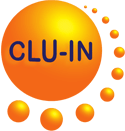Search Result from the April 2005 Issue
| Return to Search | Return to Results |
LITERATURE REVIEW ON THE USE OF COMMERCIAL BIOREMEDIATION AGENTS FOR CLEANUP OF OIL-CONTAMINATED ESTUARINE ENVIRONMENTSZhu, Xueqing (Univ. of Cincinnati); A.D. Venosa (U.S. EPA, Cincinnati, OH); M.T. Suidan (Univ. of Cincinnati). Report No: EPA 600-R-04-075, 62 pp, July 2004
This document presents a comprehensive review of the use of commercial
bioremediation products used to treat oil spills in all environments. The
literature assessed includes peer-reviewed articles and reports from
companies, government agencies, and cleanup contractors engaged in responses
to oil spills. Though estuarine environments are the primary focus, marine
shorelines, terrestrial environments, fresh waters, and wetlands are frequent
candidates for bioremediation of spilled oil, and information on these
ecosystems is contained in the review. This report will be useful for oil
spill responders (e.g., on-scene coordinators and response contractors) to
better understand the feasibility of bioremediation technology and to aid in
bioremediation products selection. Section 1 provides an overall introduction
of the background and the scope of this review. Section 2 presents an in-depth
review of field tests of bioremediation products based on literature from
peer-reviewed journal articles, books, and conference proceedings. Section 3
evaluates oil bioremediation products identified in the gray literature, i.e.,
government agency reports and vendor/service provider reports. Section 4
presents conclusions and recommendations based on the reviewed information.
The reviewers arrived at the following conclusions. (1) According to the
peer-reviewed literature, bioaugmentation appears to have little benefit for
the treatment of spilled oil in an open environment. Microbial addition has
not been shown to work better than nutrient addition alone in many field
trials; however, vendor case studies seem to suggest that application of
bioaugmentation products could still have some potential in the treatment of
specific oil components, isolated spills in confined areas, or certain
environments where oil-degrading microorganisms are deficient. Unfortunately,
the evidence for such a conclusion is not strong and in most if not all cases
is scientifically deficient. (2) Biostimulation has been shown to be a
promising tool to treat certain aerobic oil-contaminated shorelines. One of
the key factors for the success of a biostimulation approach is to maintain an
optimal nutrient level in the interstitial pore water. In general, commercial
oleophilic nutrient products have not shown clear advantages over common
agricultural fertilizers in stimulating oil biodegradation. Effects of
nutrients are also highly site-specific. For example, the availability of
oxygen rather than nutrients is often the limiting factor in wetlands, where
addition of nutrient products has not been successful in enhancing oil
biodegradation. (3) The extreme uncertainty associated with the efficacy of
bioremediation agents is due in large part to the poorly designed field tests
that have been conducted to demonstrate efficacy. Much of the work reported in
literature either lacked proper controls and quality assurance, or the data
were incorrectly analyzed. If there is any hope for advancement of commercial
bioremediation, experiments based on sound scientific principles are needed.
Unfortunately, due to the extreme resource intensiveness of field studies, the
benefit accruing to testing any bioremediation agent is only applicable to the
one product being tested.
Available at http://www.epa.gov/ORD/NRMRL/pubs/600r04075/600r04075.htm
The Technology Innovation News Survey welcomes your comments and
suggestions, as well as information about errors for correction. Please
contact Michael Adam of the U.S. EPA Office of Superfund Remediation
and Technology Innovation at adam.michael@epa.gov or (703) 603-9915
with any comments, suggestions, or corrections.
Mention of non-EPA documents, presentations, or papers does not constitute a U.S. EPA endorsement of their contents, only an acknowledgment that they exist and may be relevant to the Technology Innovation News Survey audience.





